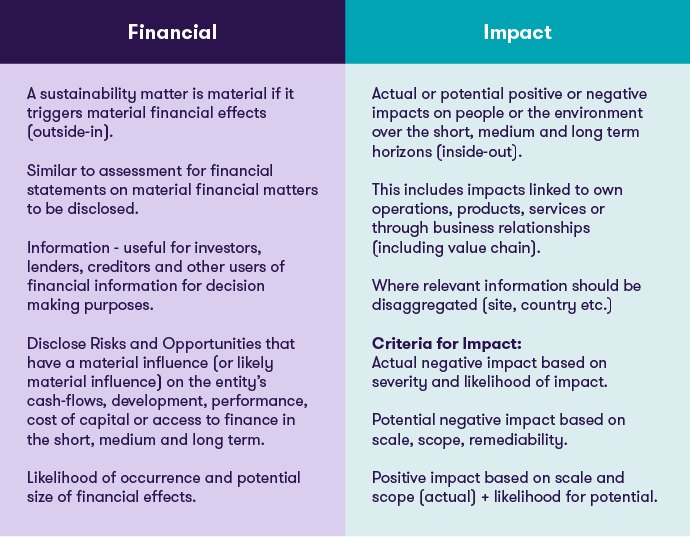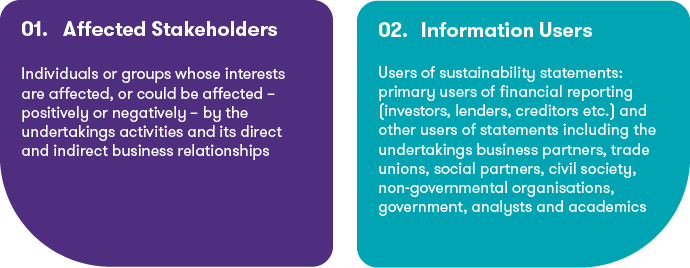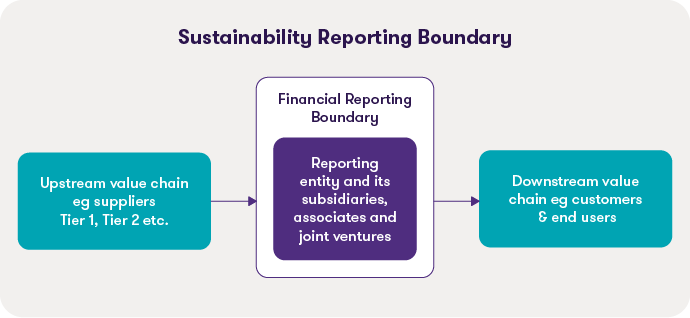-
Why Grant Thornton
Whether you’re growing in one market or many, looking to operate more effectively, managing risk and regulation, or realising stakeholder value, our firms can help.
-
Culture and experience
Grant Thornton’s culture is one of our most valuable assets and has steered us in the right direction for more than 100 years.
-
Global scale and capability
Beyond global scale, we embrace what makes each market unique, local understanding on a global scale.
-
Join our network
In a world that wants more options for high quality services, we differentiate in the market to grow sustainably in today’s rapidly changing environment.
-
Leadership governance and quality
Grant Thornton International Ltd acts as the coordinating entity for member firms in the network with a focus on areas such as strategy, risk, quality monitoring and brand.
-
Africa
24 member firms supporting your business.
-
Americas
31 member firms, covering 44 markets and over 20,000 people.
-
Asia-Pacific
19 member firms with nearly 25,000 people to support you.
-
Europe
53 member firms supporting your business.
-
Middle East
8 member firms supporting your business.
-
Business consulting services
Our business consulting services can help you improve your operational performance and productivity, adding value throughout your growth life cycle.
-
Business process solutions
We can help you identify, understand and manage potential risks to safeguard your business and comply with regulatory requirements.
-
Business risk services
The relationship between a company and its auditor has changed. Organisations must understand and manage risk and seek an appropriate balance between risk and opportunities.
-
Cybersecurity
As organisations become increasingly dependent on digital technology, the opportunities for cyber criminals continue to grow.
-
Forensic services
At Grant Thornton, we have a wealth of knowledge in forensic services and can support you with issues such as dispute resolution, fraud and insurance claims.
-
Mergers and acquisitions
We work with entrepreneurial businesses in the mid-market to help them assess the true commercial potential of their planned acquisition and understand how the purchase might serve their longer-term strategic goals.
-
Recovery and reorganisation
Workable solutions to maximise your value and deliver sustainable recovery.
-
Transactional advisory services
We can support you throughout the transaction process – helping achieve the best possible outcome at the point of the transaction and in the longer term.
-
Valuations
We provide a wide range of services to recovery and reorganisation professionals, companies and their stakeholders.
-
Sustainability advisory
We can assist you with a variety of sustainability advice depending on your needs, ranging from initial strategy development, reporting and compliance support, through to carbon measurement and management.

-
IFRS
At Grant Thornton, our IFRS advisers can help you navigate the complexity of financial reporting from IFRS 1 to IFRS 17 and IAS 1 to IAS 41.
-
Audit quality monitoring
Having a robust process of quality control is one of the most effective ways to guarantee we deliver high-quality services to our clients.
-
Global audit technology
Our global assurance technology platform provides the ability to conduct client acceptance, consultations and all assurance and other attestation engagements.
-
Sustainability assurance
Our sustainability assurance services are based on our global network of specialists, helping you make more efficient decisions for the good of your organisation.

-
Corporate and business tax
Our trusted teams can prepare corporate tax files and ruling requests, support you with deferrals, accounting procedures and legitimate tax benefits.
-
Direct international tax
Our teams have in-depth knowledge of the relationship between domestic and international tax laws.
-
Global mobility services
Through our global organisation of member firms, we support both companies and individuals, providing insightful solutions to minimise the tax burden for both parties.
-
Indirect international tax
Using our finely tuned local knowledge, teams from our global organisation of member firms help you understand and comply with often complex and time-consuming regulations.
-
Transfer pricing
The laws surrounding transfer pricing are becoming ever more complex, as tax affairs of multinational companies are facing scrutiny from media, regulators and the public
-
Africa tax desk
A differentiating solution adapted to the context of your investments in Africa.
-
Sustainability tax
Through our sustainability tax advisory services, we can advise how environmental taxes, incentives, and obligations can impact your progress, requiring alignment with governmental and legislative pressures.

-
 Banking Holding banking to account: the real diversity and inclusion pictureWe explore how the banking sector can continue to attract, retain and nurture women to build a more diverse and inclusive future.
Banking Holding banking to account: the real diversity and inclusion pictureWe explore how the banking sector can continue to attract, retain and nurture women to build a more diverse and inclusive future. -
 Sustainability From voluntary to mandatory ESG: How banks can future-proof their operationsAs we move from voluntary ESG initiatives to mandatory legislation, we explore what the banking sector needs to prioritise.
Sustainability From voluntary to mandatory ESG: How banks can future-proof their operationsAs we move from voluntary ESG initiatives to mandatory legislation, we explore what the banking sector needs to prioritise. -
 IFRS IFRS 9 - Audit of Expected Credit LossesGPPC releases The Auditor’s response to the risks of material misstatement posed by estimates of expected credit losses under IFRS 9
IFRS IFRS 9 - Audit of Expected Credit LossesGPPC releases The Auditor’s response to the risks of material misstatement posed by estimates of expected credit losses under IFRS 9 -
 growthiQ Steering your company to long-term successHistory has something important to tell us about the difficulties of steering a business to long-term success – through seismic shifts in technology, consumer demands and product development. With that in mind it’s unsurprising that over half the world’s largest companies in the early 1900s had shut their doors by the late 1990s. Some, however, have endured.
growthiQ Steering your company to long-term successHistory has something important to tell us about the difficulties of steering a business to long-term success – through seismic shifts in technology, consumer demands and product development. With that in mind it’s unsurprising that over half the world’s largest companies in the early 1900s had shut their doors by the late 1990s. Some, however, have endured.
-
 International Financial Reporting Standards Implementation of IFRS 17 ‘Insurance Contracts’The auditor’s response to the risks of material misstatement arising from estimates made in applying IFRS 17 ‘Insurance Contracts’
International Financial Reporting Standards Implementation of IFRS 17 ‘Insurance Contracts’The auditor’s response to the risks of material misstatement arising from estimates made in applying IFRS 17 ‘Insurance Contracts’ -
 IFRS Get ready for IFRS 17After twenty years of development the IASB has published IFRS 17 ‘Insurance Contracts’, find out more.
IFRS Get ready for IFRS 17After twenty years of development the IASB has published IFRS 17 ‘Insurance Contracts’, find out more.
-
 Global business pulse - industry analysis Mid-market recovery spreads to more industriesThe index results for 13 key industries of the mid-market reveals a very uneven recovery from COVID-19
Global business pulse - industry analysis Mid-market recovery spreads to more industriesThe index results for 13 key industries of the mid-market reveals a very uneven recovery from COVID-19 -
 Global business pulse - industry analysis A very uneven recovery across industriesThe index results for 13 key industries of the mid-market reveals a very uneven recovery from COVID-19
Global business pulse - industry analysis A very uneven recovery across industriesThe index results for 13 key industries of the mid-market reveals a very uneven recovery from COVID-19 -
 Global business pulse - Sector analysis Clear patterns of damage from COVID-19 across the industriesThe index results for 12 key sectors of the mid-market reveal just how much or little the various parts of the economy were impacted by COVID-19.
Global business pulse - Sector analysis Clear patterns of damage from COVID-19 across the industriesThe index results for 12 key sectors of the mid-market reveal just how much or little the various parts of the economy were impacted by COVID-19. -
 Not for profit Mission: possible – putting impact at the heart of charityGlobal charitable continues to decline and charity leaders are increasingly looking at their own unique impact journey.
Not for profit Mission: possible – putting impact at the heart of charityGlobal charitable continues to decline and charity leaders are increasingly looking at their own unique impact journey.
-
 Access to finance Raise finance to invest in changePrepare your business to raise finance to invest in change.
Access to finance Raise finance to invest in changePrepare your business to raise finance to invest in change. -
 Private equity firms Private equity in the mid-market: reshaping strategies for 2021When the global COVID-19 pandemic stormed across the globe in early 2020, the private equity sector was hit hard but deals are coming back to the market.
Private equity firms Private equity in the mid-market: reshaping strategies for 2021When the global COVID-19 pandemic stormed across the globe in early 2020, the private equity sector was hit hard but deals are coming back to the market. -
 Mid-market businesses Getting ready for private equity investmentOur specialists explore how private equity firms are now working with their portfolios and how the mid-market can benefit from investment.
Mid-market businesses Getting ready for private equity investmentOur specialists explore how private equity firms are now working with their portfolios and how the mid-market can benefit from investment. -
 Mid-market businesses Myth-busting private equityNervous about partnering with Private Equity? We explore some of the common myths we come across when speaking to mid-market businesses about PE investment.
Mid-market businesses Myth-busting private equityNervous about partnering with Private Equity? We explore some of the common myths we come across when speaking to mid-market businesses about PE investment.
-
 Public sector Helping build the government of tomorrow, todayLearn about the Grant Thornton US public sector team.
Public sector Helping build the government of tomorrow, todayLearn about the Grant Thornton US public sector team. -
 Global business pulse - industry analysis Mid-market recovery spreads to more industriesThe index results for 13 key industries of the mid-market reveals a very uneven recovery from COVID-19
Global business pulse - industry analysis Mid-market recovery spreads to more industriesThe index results for 13 key industries of the mid-market reveals a very uneven recovery from COVID-19 -
 Global business pulse - industry analysis A very uneven recovery across industriesThe index results for 13 key industries of the mid-market reveals a very uneven recovery from COVID-19
Global business pulse - industry analysis A very uneven recovery across industriesThe index results for 13 key industries of the mid-market reveals a very uneven recovery from COVID-19 -
 Global business pulse - Sector analysis Clear patterns of damage from COVID-19 across the industriesThe index results for 12 key sectors of the mid-market reveal just how much or little the various parts of the economy were impacted by COVID-19.
Global business pulse - Sector analysis Clear patterns of damage from COVID-19 across the industriesThe index results for 12 key sectors of the mid-market reveal just how much or little the various parts of the economy were impacted by COVID-19.
-
 Industries European Real Estate PodcastJessica Patel, Tax Partner at Grant Thornton UK speaks with tax partners and directors across the network to share their insights on the real estate market and some of the challenges.
Industries European Real Estate PodcastJessica Patel, Tax Partner at Grant Thornton UK speaks with tax partners and directors across the network to share their insights on the real estate market and some of the challenges. -
 Industries European Real Estate PodcastJessica Patel, Tax Partner at Grant Thornton UK speaks with tax partners and directors across the network to share their insights on the real estate market and some of the challenges.
Industries European Real Estate PodcastJessica Patel, Tax Partner at Grant Thornton UK speaks with tax partners and directors across the network to share their insights on the real estate market and some of the challenges. -
 Global business pulse - industry analysis Mid-market recovery spreads to more industriesThe index results for 13 key industries of the mid-market reveals a very uneven recovery from COVID-19
Global business pulse - industry analysis Mid-market recovery spreads to more industriesThe index results for 13 key industries of the mid-market reveals a very uneven recovery from COVID-19 -
 Global business pulse - industry analysis A very uneven recovery across industriesThe index results for 13 key industries of the mid-market reveals a very uneven recovery from COVID-19
Global business pulse - industry analysis A very uneven recovery across industriesThe index results for 13 key industries of the mid-market reveals a very uneven recovery from COVID-19
-

-
 Global business pulse - industry analysis Mid-market recovery spreads to more industriesThe index results for 13 key industries of the mid-market reveals a very uneven recovery from COVID-19
Global business pulse - industry analysis Mid-market recovery spreads to more industriesThe index results for 13 key industries of the mid-market reveals a very uneven recovery from COVID-19 -
 Global business pulse - industry analysis A very uneven recovery across industriesThe index results for 13 key industries of the mid-market reveals a very uneven recovery from COVID-19
Global business pulse - industry analysis A very uneven recovery across industriesThe index results for 13 key industries of the mid-market reveals a very uneven recovery from COVID-19 -
 Retail How retail is positioning for successCOVID-19 provided some hard lessons for the retail industry. It is time to turn those into sustainable and well executed growth strategies in 2021.
Retail How retail is positioning for successCOVID-19 provided some hard lessons for the retail industry. It is time to turn those into sustainable and well executed growth strategies in 2021.
-
 Technology Mid-market tech companies lead the way on diversity and inclusionWe explore how the mid-market tech sector can continue to build and nurture a culture that’s increasingly more diverse and inclusive for women.
Technology Mid-market tech companies lead the way on diversity and inclusionWe explore how the mid-market tech sector can continue to build and nurture a culture that’s increasingly more diverse and inclusive for women. -
 Tax Resetting global tax rules after the pandemicBusinesses are seeing rising challenges, and finance heads are dealing with a range of new measures. To say the next 12 months are critical for businesses is an understatement.
Tax Resetting global tax rules after the pandemicBusinesses are seeing rising challenges, and finance heads are dealing with a range of new measures. To say the next 12 months are critical for businesses is an understatement. -
 TECHNOLOGY International tax reform: the potential impact on the technology industryIn this article, we’ve summarised key elements of the global tax reform proposals, their potential impact on technology industry and advice from our digital tax specialists on what technology companies can do to prepare.
TECHNOLOGY International tax reform: the potential impact on the technology industryIn this article, we’ve summarised key elements of the global tax reform proposals, their potential impact on technology industry and advice from our digital tax specialists on what technology companies can do to prepare. -
 TMT TMT industry: Fully charged or on standby?Our research revealed five key trends that resonated with Technology, Media and Telecoms (TMT) industry leaders around the world. We asked a panel of our experts from UK, US, India Ireland and Germany, to give us their reaction to the findings.
TMT TMT industry: Fully charged or on standby?Our research revealed five key trends that resonated with Technology, Media and Telecoms (TMT) industry leaders around the world. We asked a panel of our experts from UK, US, India Ireland and Germany, to give us their reaction to the findings.
-
 TMT TMT industry: Fully charged or on standby?Our research revealed five key trends that resonated with Technology, Media and Telecoms (TMT) industry leaders around the world. We asked a panel of our experts from UK, US, India Ireland and Germany, to give us their reaction to the findings.
TMT TMT industry: Fully charged or on standby?Our research revealed five key trends that resonated with Technology, Media and Telecoms (TMT) industry leaders around the world. We asked a panel of our experts from UK, US, India Ireland and Germany, to give us their reaction to the findings. -
 Cybersecurity One size fits nothingTechnology companies must adopt a new approach to digital risk: those that successfully develop a reputation for digital trust by demonstrating an unwavering commitment to cyber security and data privacy will be able to carve out a competitive advantage.
Cybersecurity One size fits nothingTechnology companies must adopt a new approach to digital risk: those that successfully develop a reputation for digital trust by demonstrating an unwavering commitment to cyber security and data privacy will be able to carve out a competitive advantage. -
 Technology, media & telecommunications Why it’s time for a 5G reality checkFigures suggest the mobile sector is maturing. While data usage continues to soar, mobile revenues are expected to flatten out over the next few years.
Technology, media & telecommunications Why it’s time for a 5G reality checkFigures suggest the mobile sector is maturing. While data usage continues to soar, mobile revenues are expected to flatten out over the next few years. -
 GrowthiQ Is blockchain right for your business?Blockchain has been seized upon by the financial services sector, where it is playing a crucial role in tracking and authenticating transactions.
GrowthiQ Is blockchain right for your business?Blockchain has been seized upon by the financial services sector, where it is playing a crucial role in tracking and authenticating transactions.
-
 International business Mid-market businesses lifted by rising tide of optimismOptimism among global mid-market business leaders rose to 67% in the first half of this year and they are markedly more optimistic about their prospects with global optimism having increased by 8%.
International business Mid-market businesses lifted by rising tide of optimismOptimism among global mid-market business leaders rose to 67% in the first half of this year and they are markedly more optimistic about their prospects with global optimism having increased by 8%. -
 Global business pulse - industry analysis Mid-market recovery spreads to more industriesThe index results for 13 key industries of the mid-market reveals a very uneven recovery from COVID-19
Global business pulse - industry analysis Mid-market recovery spreads to more industriesThe index results for 13 key industries of the mid-market reveals a very uneven recovery from COVID-19 -
 Hotels COVID-19: Checking in with the hotel industry one year onCOVID-19 provided some hard lessons for the hotel sector. It is time to turn those into sustainable and well executed growth strategies.
Hotels COVID-19: Checking in with the hotel industry one year onCOVID-19 provided some hard lessons for the hotel sector. It is time to turn those into sustainable and well executed growth strategies. -
 Global business pulse - industry analysis A very uneven recovery across industriesThe index results for 13 key industries of the mid-market reveals a very uneven recovery from COVID-19
Global business pulse - industry analysis A very uneven recovery across industriesThe index results for 13 key industries of the mid-market reveals a very uneven recovery from COVID-19
- By topic
-
Women in Business 2025
For 21 years, the Women in Business report has tracked the proportion of women in senior roles in the mid-market. Progress has been made but with gender equity over 25 years away, that isn’t soon enough.
-
The journey to a sustainable future
The world needs a sustainable mid-market. It’s vital to economies, societies and the planet. Businesses, governments, and other stakeholders must work collaboratively to make sure this vital part of the world economy succeeds.
-
Navigating tariffs
Traditional global export markets continue to shift as tariffs are introduced, presenting a challenge for mid-market firms
-
International business: Mid-market growth and expansion
The mid-market looks to international business opportunities for growth.
-
Women in Business 2025: Impacting the missed generation
The 2025 Women in Business report explores the external pressures and internal drivers that impact gender diversity in senior roles in the mid-market.
-
Women in tech: A pathway to gender balance in top tech roles
Grant Thornton’s 2024 Women in Business data suggests we are far from achieving parity within the mid-market technology sector.
-
Women in leadership: a pathway to better performance
What makes the benefits of gender parity compelling is the impact it can have on commercial performance.
-
Women in Business 2024
2024 marks the 20th year of Women in business where we monitor and measure the proportion of women occupying senior management roles around the world.
-
Women in business: Regional picture
We saw an increase in the percentage of senior management roles held by women, on a global level, but there are some significant regional and country variations.
-
Pathways to Parity: Leading the way
To push towards parity of senior management roles held by women, who leads within an organisation is vital.
-
Generating real change with a long-term focus
The most successful strategy to achieve parity of women in senior management is one which stands alone, independent of an ESG strategy.
-
People at the heart of great business
Businesses have started to put guidelines and incentives in place, focused on driving employees back to the office.
-
The journey to a sustainable future
The world needs a sustainable mid-market. It’s vital to economies, societies and the planet. Businesses, governments, and other stakeholders must work collaboratively to make sure this vital part of the world economy succeeds.
-
Ten considerations for preparing TCFD climate-related financial disclosures
Insights for organisations preparing to implement the International Sustainability Standards Board (ISSB)’s Standards.
-
COP28
COP28 was the first time there has been a global stocktake on progress against the Paris Agreement.
-
Transition Plan Taskforce publishes its final disclosure framework
As organisations in the private sector make commitments and plans to reach net zero, there's a growing need for stakeholders to be able to assess the credibility of their transition plans.
-
Promoting ESG excellence through tax
ESG considerations have never been more important for an organisation’s long-term success, but how can tax be used to add value to an ESG agenda?
-
International business: Mid-market growth and expansion
The mid-market looks to international business opportunities for growth.
-
Top five constraints to international business in the mid-market
Top five major constraints that are testing the mid-market’s ability to grow their businesses internationally.
-
Brand and international marketing – breaking global barriers
Brand has been identified as a key driver of mid-market success when looking to grow and develop international business.
-
The key to international business: Investing in people
How can recruitment and retention help grow international business?
-
Building resilience in international business
Evolving supply chains and trade patterns amid ongoing global uncertainty.
-
Example Financial Statements
The 2025 Interim Financial Statements provide general guidance on preparing interim financial statements in accordance with IFRS Accounting Standards.
-
IFRS 8
Our ‘Insights into IFRS 8’ series considers some key implementation issues and includes interpretational guidance in certain problematic areas.
-
IFRS 16
Are you ready for IFRS 16? This series of insights will help you prepare.
-
IAS 36
Insights into IAS 36 provides assistance for preparers of financial statements and help where confusion has been seen in practice.
-
IFRS 17
Explaining the key features of the Standard and providing insights into its application and impact.
-
Pillar 2
Key updates and support for the global implementation of Pillar 2.
-
Global expatriate tax guide
Growing businesses that send their greatest assets – their people – overseas to work can face certain tax burdens, our global guide highlights the common tax rates and issues.
-
International indirect tax guide
Navigating the global VAT, GST and sales tax landscape.
-
Global transfer pricing guide
Helping you easily find everything you need to know about the rules and regulations regarding transfer pricing and Country by Country reporting for every country you do business with.

As the final text of the ESRS is now available, companies within their scope need to get ready now as some reporting entities within the scope of CSRD will have to apply ESRS for reporting periods commencing on or after 1 January 2024.
The following FAQs will help you understand a bit more about the CSRD and the ESRS that have been released.
On 5 January 2023, the Corporate Sustainability Reporting Directive (CSRD) entered into force. It builds upon its predecessor the Non-Financial Reporting Directive (NFRD), which was issued in 2018. The CSRD expands the scope of entities who will have to disclose sustainability information, and introduces requirements (particularly across basis for preparation, strategy and business model, due diligence, governance, risk and opportunity management, and targets and metrics) that are more detailed. In addition, there are more detailed disclosures under Environmental (E), Social (S) and Governance (G) topics, collectively known as ESG.
The NFRD applied to large and listed entities which totaled approximately 11,000 EU entities. The CSRD is estimated to apply to circa 50,000 EU entities. Entities in scope will have to include disclosures as part of their annual management report alongside their financial statements and for the same reporting periods. This reporting will cover both the entity’s own operations and its value chain.
The objective of the CSRD is to improve the existing requirements of the EU’s Non-Financial Reporting Directive (NFRD), to better harness the potential of the European Union in the transition to a fully sustainable and inclusive economic and financial system, in accordance with the European Green Deal and the UN Sustainable Development Goals.
The new rules will ensure that investors and other stakeholders have access to the information they need to assess investment risks arising from climate change and other sustainability issues. They will also create a culture of transparency about the impact of entities on people and the environment.
The CSRD forms part of the European Union’s Sustainable Finance package of regulations including Sustainable Finance Disclosure Regulation (SFDR) and EU Taxonomy. The first set of standards were delivered to the EU Commission by EFRAG (European Financial Reporting Advisory Group) in November 2022 with the final text of the CSRD issued on 6 December 2022.
The CSRD will apply to circa 50,000 entities on a staggered basis for fiscal years beginning on or after 1 January 2024. This will initially apply to those already reporting under NFRD for the financial year 2024, so reporting in 2025. Other entities meeting the scoping criteria as set out in CSRD will need to report from FY 2025 onwards with SMEs and EU subsidiaries coming into scope later and up to FY 2028.
The scoping criteria confirms the CSRD applies to all entities, including subsidiaries of non-EU parents, that have debt or equity securities listed on an EU-regulated market (other than micro-entities). Additionally, the CSRD also applies to all EU entities that meet at least two of the following three criteria on its two most recent consecutive balance-sheet dates:
- Total assets exceeding €20 million
- Net turnover exceeding €40 million
- 250+ employees.
Additional rules and scoping criteria apply for Group and EU Subsidiary entities of non-EU parents as defined within the CSRD.
Consolidated sustainability reporting also applies to sustainability statements and goes beyond consolidation requirements covered within the financial statements with entities needing to provide an adequate understanding of the risk / impacts of the subsidiaries across any material topics.
NFRD brought very large and listed entities into scope for sustainability reporting. CSRD broadens the scope in terms of entities required to prepare sustainability statements. Under CSRD, entities must assess their eligibility against three criteria including average number of employees (>250), total assets (>€20m) and turnover levels (>€40m). EU entities meeting two of the three criteria set out will be in scope for CSRD. Additional scoping and consolidation considerations for non-EU entities and their subsidiaries also need to be considered.
The most significant difference is the introduction of mandatory reporting standards under the CSRD in the form of the European Sustainability Reporting Standards (ESRS). Entities reporting under CSRD must apply these EU sustainability reporting standards and bring sustainability information into their annual management report, applying the same reporting period for both.
The EU Commission is at the final stages of approval of the first tranche or Set 1 of the ESRS (includes two cross cutting and ten topical standards across E, S and G). The last public consultation on the final amendments closed on 7 July 2023 and the final text was issued within the EU Delegated Acts on July 31 2023.[i] The draft ESRS take into consideration existing EU regulation such as the SFDR and Taxonomy regulations, as well as considering international initiatives such as the ISSB, TCFD and GRI, in order to try and lessen the burden on entities by avoiding duplication of disclosures. EFRAG has issued a number of reconciliation and navigation tables within the Appendices to the draft ESRS (Refer to Appendices 1 to 6) linking disclosures within ESRS to other relevant regulatory reporting frameworks.[ii]
What topics are included in the first set of ESRS?
The first set of ESRS includes two 'cross cutting' and ten topical standards across the three ESG areas.
- ESRS 1 is the conceptual framework of ESRS and does not contain any specific disclosures but is guidance in the application of ESRS for entities in scope, and includes explanations and guidance around double materiality, value chain disclosure and sustainability due diligence. In addition, it includes examples on presentation, structure of sustainability statements and guidance for draft transitional provisions upon first time adoption.
- ESRS 2 General Disclosures is mandatory for all entities in scope for CSRD. ESRS 2 includes disclosures required around basis of preparation, governance structures and due diligence procedures, strategy and business models and impacts, risks and opportunity management for entities. It is expected that all topical standards will be subject to a double materiality assessment by entities, in order to determine what should be disclosed.
Note - As part of the EU public consultation, ESRS E1 ‘Climate’ and ESRS S1 ‘Own Workforce’ (1-9) were amended. The EU Commission proposed that these Standards, alongside the rest of the topical ESRS, are subject to a double materiality assessment, which has now been approved. ESRS 2 is the only standard that is now mandatory and not subject to the double materiality assessment process. - ESRS E1 to E5 related to topical Environmental disclosures, ESRS S1 to S4 related to topical social disclosures and ESRS G1 relates to topical governance disclosures as outlined below.
The CSRD and ESRS introduce the concept of double materiality. Entities applying ESRS must report material impacts, risks and opportunities or 'IROs' across each topical area within their sustainability statements that are both financially impactful (outside in) and have an impact to people and the environment (inside out).

These disclosures will cover both the entity’s own operations and its upstream and downstream value chain. However, the ESRS contain some transitional reliefs in respect of the value chain. Implementation guidance on both the Materiality Assessment process and Value Chain provisions are currently in draft and will be issued by EFRAG in Q4 2023. Current drafts of this guidance are available for review but currently are subject to change and final approvals.[iii]
Double materiality concept: Summary overview and concepts

Stakeholders and their relevance to the materiality assessment process
Within ESRS, stakeholders are defined as both users of sustainability statements and other stakeholders or information users. Stakeholders are those who can affect, or be affected by, the organisation and both need to be incorporated into the due diligence process.

iii. www.efrag.org - Implementation guidance for value chain (VCIG) - 23.08.23
The European Financial Reporting Advisory Group (EFRAG) and then subsequently the European Commission, through its final consultation process, have provided some phased-In Disclosure Requirements that will help reporting entities, particularly smaller entities that would be subject to sustainability reporting requirements for the first time.
The full list of phased-in requirements is included in ESRS 1: Appendix C
A summary of phased-in Disclosure Requirements for all reporting entities is outlined below:
| Year 1 | Year 2 | Year 3 |
| Comparative information is not required | ||
| Datapoints related to their own workforce in ESRS S1 – social protection, persons with disabilities, work-related ill-health, and work-life balance are not required | ||
| Financial effects related to non-climate environmental issues (pollution, water, biodiversity, and resource use) are not required, qualitative disclosures can be provided in the first three years. | ||
| In the absence of sector-specific standards, other available frameworks could be used to develop specific disclosures if required for material entity-specific sustainability matters not included in the first set of ESRS. | ||
| Company-specific disclosures that were developed prior to the ESRS being adopted can still be used. | ||
| There is a requirement to consider value chain as part of materiality assessment process but data gathering aspects are limited for the first three years and information on the value chain can estimated or omitted if the information is not available during this time. | ||
For reporting entities with less than 750 employees:
| Year 1 | Year 2 | Year 3 |
| Scope 3 Greenhouse Gas (GHG) emissions data, and ESRS S1 disclosures are not required. | ||
| The disclosure requirements for biodiversity (ESRS E4), Workers in the value chain (ESRS S2), Affected Communities (ESRS S3) and Consumers and End-users (ESRS E4) are not required. | ||
In addition, until 2030, EU subsidiaries of non-EU parents can prepare just one report, which includes subsidiaries that would ordinarily be required to report separately, due to size or if they are listed.
CSRD expands the reporting boundary for undertakings beyond their own operations to include both upstream and downstream value chain activities. An undertaking must report material impacts, risks and opportunities within the value chain against ESRS disclosures or if other material impacts exist not covered by ESRS include entity specific disclosures. This applies to all tiers of the value chain.
Where value chain information is not available, entities can use internal or estimated data or sector proxies during the initial transitionary periods. The ESRS contain phasing-in reliefs in the first three years of implementation if this information is not available. Refer to phasing-in FAQ for more information.

Depending on when you come into scope for CSRD and what your maturity level is with respect to your sustainability strategy, structures and reporting process, you may have a number of areas to consider including:
We can help
We hope you find the information in this article helpful in beginning to understand the requirements of the CSRD. If you would like to discuss any of the points raised, please speak to your usual Grant Thornton contact or your local member firm.
